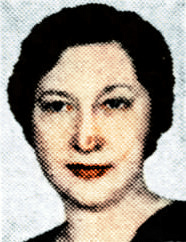The Pittsburgh Press (February 19, 1944)

Ferguson: Fascinators as symbols
By Mrs. Walter Ferguson
Sometimes I wonder whether we can win the peace with women all wearing fascinators. There is, of course, nothing wrong with fascinators. They are merely one of the pieces of equipment women use to call attention to themselves.
And there is something appealing about a pretty face framed in a piece of colored cloth. At the start of the war, there was a sweet unselfish motive apparent when all over the country women began simplifying their dress. They seemed to be saying:
I will restrain my desires for self-expression and postpone them until the war is over.
But shawls have always been symbols of submission. Poor downtrodden people have worn them for centuries. And the trouble with poor downtrodden people is that they are sometimes poor in spirit.
Now if these pretty little fascinators we see around denote cooperation, well and good. But if they mean that the women are willing to take orders while waiting to the men to get the war over, then I think we should probe more intently into their possible significance.
Post-war America will need women who refuse to be submissive. And for that reason, the shawled heads of our young girls do give me a turn as they pass in almost constant procession.
The shawls are pretty, and the fascinators fetching. But let us hope they are not symbolic of a return to a certain old-fashioned way of thinking, when women tied down their spirits as they tied up their heads.